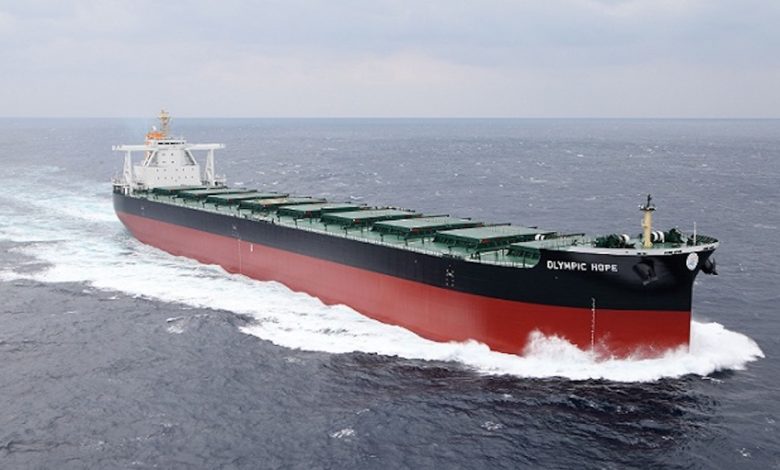Capes party like it’s 2008

Capesize freight rates are firing, propelling the Baltic Dry Index to 10-year highs with capes at their highest seasonal level since 2008 – the final few months of dry bulk’s last bullrun.
Capes climbed $4,638 on the Baltic Exchange yesterday to close at $33,290 per day, triple the 2016 – 2020 average for this time of year, with rates continuing to surge today.
“Vale has been fixing tonnage left, right and center for the C3 between Tubarao to Qingdao, involving between 5 to 8 vessels, amidst tonnage for carriage of iron ore from Ponta Da Madeira to Rotterdam,” brokers Lorentzen & Stemoco noted about Brazil’s top miner today.
Coal could be the dark horse of the dry cargo market in 2021
Activity in the east is also strong with Rio Tinto and BHP very active in the market.
Another Norwegian broker, Fearnleys, described the cape markets this week as being “in flames”.
“It’s not only the very profitable iron ore trade being active but also the coal segment is keeping itself busy adding gasoline to the fire,” Fearnleys added in its pyrotechnically themed dry bulk report.
Growing Chinese coal demands was something also picked up this week by UK broker Arrow.
“China appears to be short coal, supply gaps are trying to be filled by turning to the seaborne market and snapping up lots of Indo coal and even stretching out to Colombian and rarely taken South African,” Arrow pointed out in a new coal report. “With the peak power demand season approaching and land based supply of coal hindered, seaborne coal demand looks set to rise and could be the dark horse of the dry cargo market in 2021.”
Capes are not the only dry bulk segment powering to big profits this month. Peter Sand, BIMCO’s chief shipping analyst, commented: “Now, the force of the Chinese dry bulk imports, powered by economic stimulus, is once again fuelling the economic recovery that was shattered by the Covid-19 pandemic in China and lifting the whole dry bulk shipping market. The impact of China’s economic stimulus has not only lifted the freight rates for capesize ships. In fact, you currently see earnings across all dry bulk sectors that have not been seen stronger since 2010.”
Cleaves Securities, meanwhile, has predicted the dry bulk run could push on for the next couple of years.
“Given the historically low orderbook, very limited demand growth is needed to significantly improve fleet utilization and potentially push dry bulk earnings into super-cycle territory going forward,” Cleaves stated in a report out earlier this week. Cleaves’s high case scenario sees capes averaging $70,000 a day in 2022.

$ 70,000 a day! It is a pity that many shipowners are buried in debt and cannot go shopping! any cracked junk would shine like new with that money!